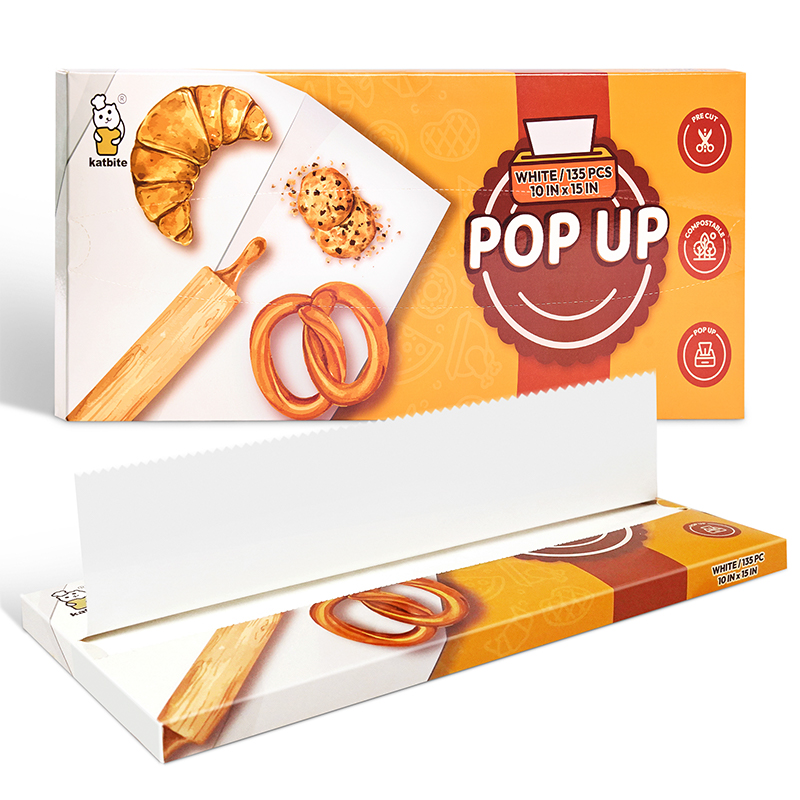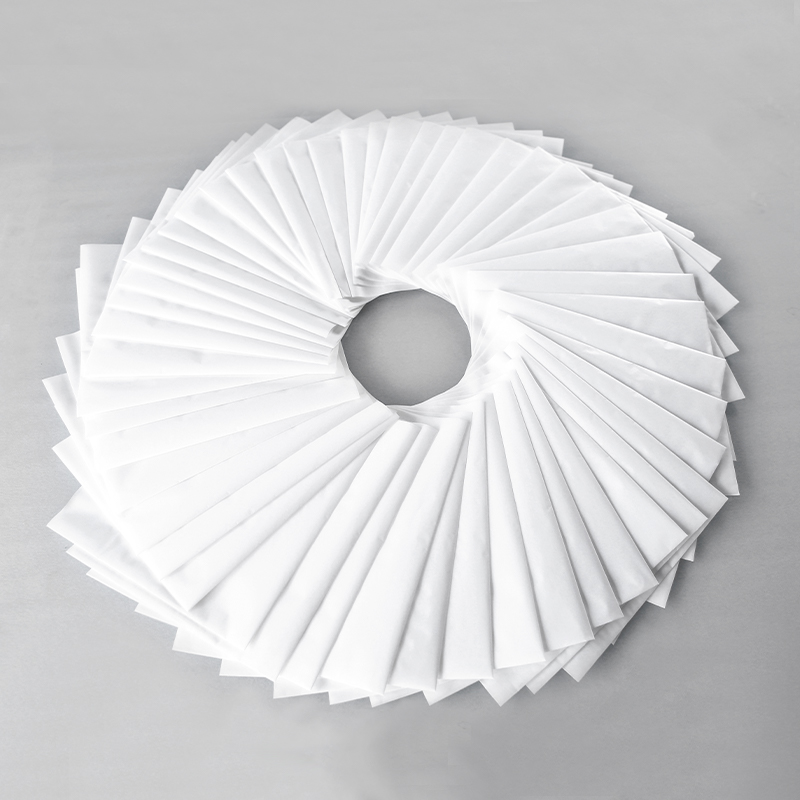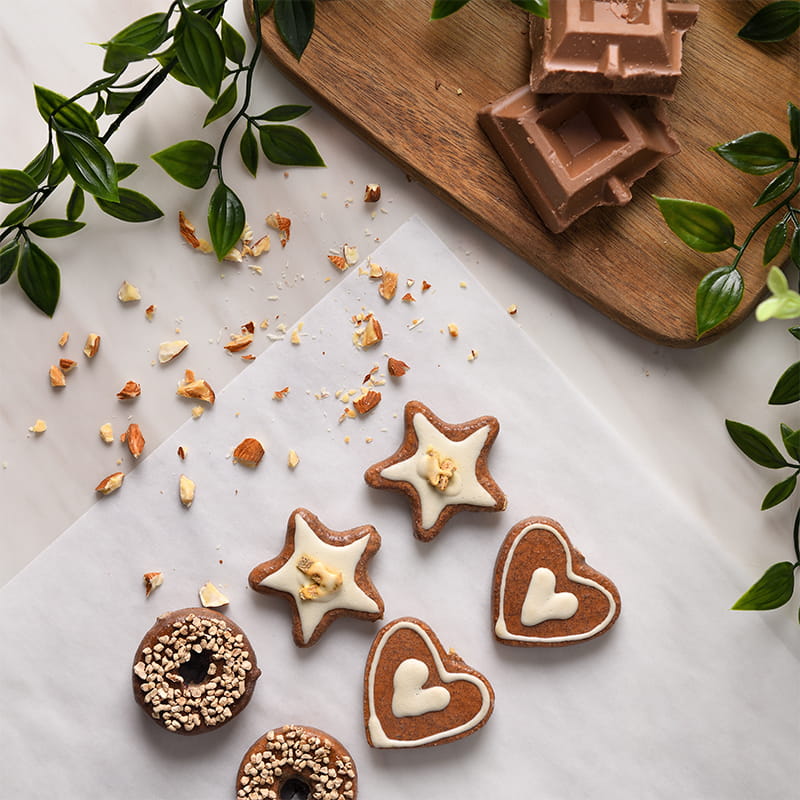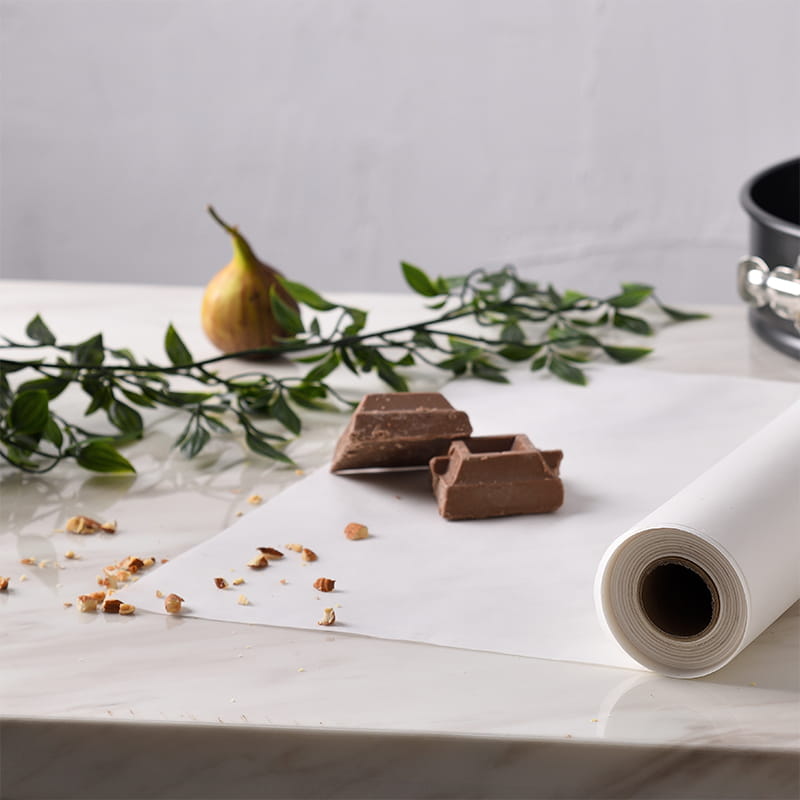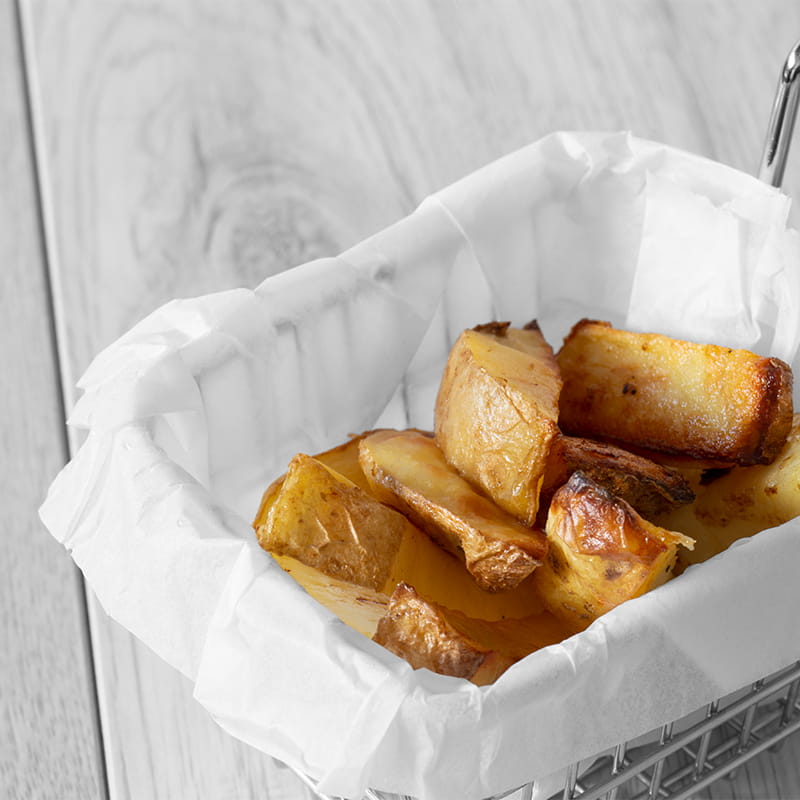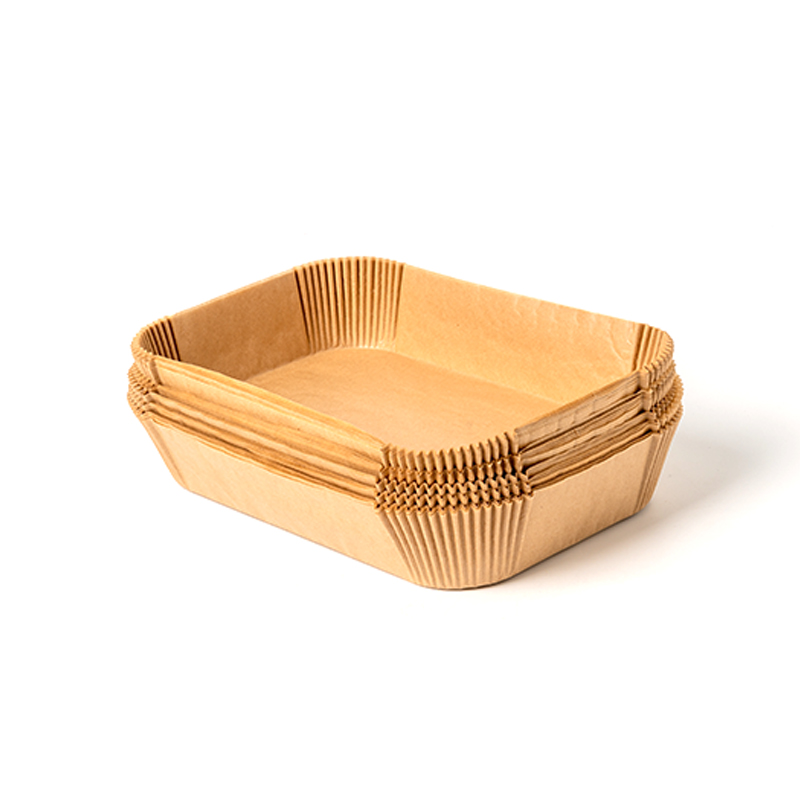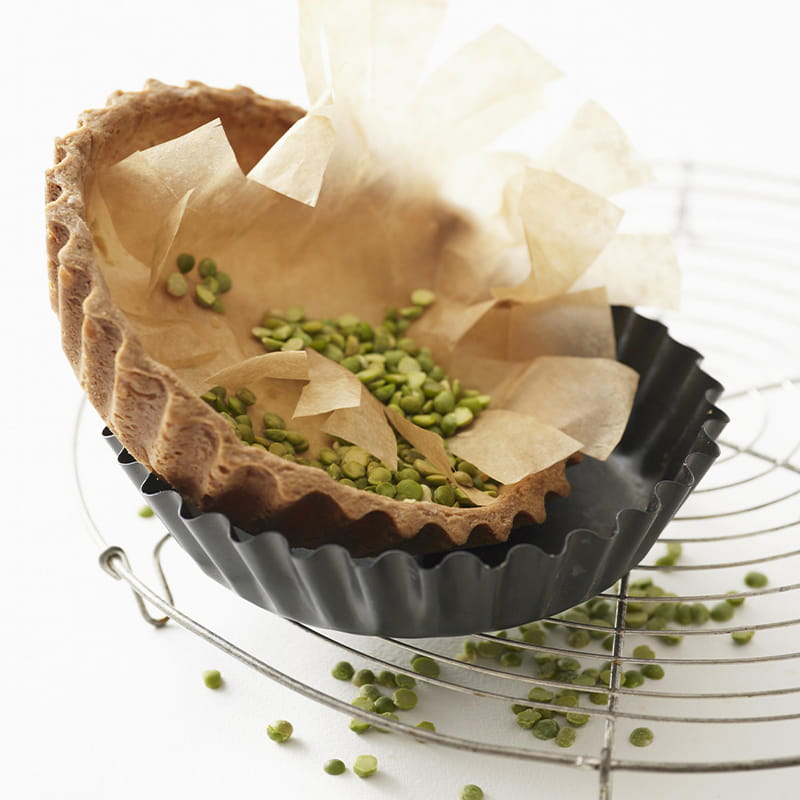Product details: Pop-up parchment paper sheets, an environment-friendly product, are composed of wood pulp and are double-side coated with silicone. Such a coating makes our paper smooth, greasepr...
See DetailsGuanghe's Baking Paper: Beyond Just a Non-Stick Solution
Baking paper, often found in rolls or pre-cut sheets, is a staple in kitchens where ovens see regular use. It's a specially treated paper designed primarily for baking applications. Its defining characteristics include a smooth surface, heat resistance (typically handling temperatures encountered in home baking), and crucially, a non-stick coating. This coating, often derived from silicone, allows baked goods to release easily without sticking to pans or trays.
Understanding the Core Purpose
The fundamental purpose of baking paper is simple yet transformative: to create a reliable, non-stick barrier between food and baking surfaces. This seemingly small function addresses several common baking challenges:
1.Effortless Release: The primary benefit. Cookies slide off, cakes lift cleanly, and breads don't weld themselves to the pan bottom. This drastically reduces frustration and potential food waste from stuck-on items.
2.Reduced Cleanup: By preventing food from adhering directly to baking sheets, pans, or trays, baking paper catches drips, spills, and crumbs. Post-baking cleanup often involves simply lifting the paper and discarding it (or cleaning it for reuse), leaving a remarkably clean surface underneath.
3.Minimized Greasing: While some recipes still call for greasing pans even with paper (especially for very high-fat batters or delicate items), baking paper significantly reduces or eliminates the need for additional fats like oil, butter, or cooking spray. This simplifies preparation and can slightly reduce the fat content in the finished product.
4.Promoting Even Baking: By providing a consistent, smooth surface, baking paper can help promote more even heat distribution underneath delicate items like cookies or pastries, contributing to uniform browning and texture.
Why Opt for Baking Paper? Exploring Its Advantages
Choosing baking paper over alternatives like greasing alone or using parchment paper involves weighing several practical benefits:
Convenience & Efficiency: The built-in non-stick coating means skipping the step of greasing pans for many applications. This saves time and eliminates the mess associated with oils or sprays.
Consistent Performance: Baking paper offers reliable non-stick performance with each use, unlike greasing which can sometimes be uneven or insufficient.
Cleaner Baking Process: As it catches spills and crumbs, baking paper keeps pans cleaner during the baking process. This is particularly advantageous for items prone to caramelization or dripping cheese.
Versatility in Shapes and Sizes: Baking paper is readily available in formats that suit different needs: rolls for custom sizes, pre-cut sheets for standard sheet pans, and even rounds for cake pans. This saves the step of cutting larger sheets down to size.
Potential for Reuse (Significant Advantage): While not universally applicable (heavily soiled or torn paper should be discarded), baking paper's inherent durability compared to standard parchment paper often allows for multiple uses, especially if lightly used for items like cookies or bread rolls. This enhances its overall value and reduces waste compared to single-use alternatives.
Baking Paper in Action: Embracing Culinary Techniques
Its utility extends beyond basic non-stick properties, adapting to various baking needs:
Achieving Crispness: For items where a crisp bottom or exterior is desired (like certain cookies, flatbreads, or roasted vegetables), baking placed directly on a sheet pan facilitates air circulation and heat transfer, aiding crisping.
Protecting Delicate Bottoms: Conversely, baking paper acts as an insulator. For items prone to over-browning or burning on the bottom (like cheesecakes, custards, or fruit tarts), placing the pan on a baking sheet lined with paper can provide a protective buffer.
Enabling Steam Baking (Indirectly): While baking paper itself doesn't trap steam like a lid, it can be used creatively. Placing another baking sheet, loosely tented foil, or even a second layer of baking paper over items on a lined tray can help create a microenvironment that retains moisture during baking – useful for keeping loaf bread crusts softer initially or preventing delicate items from drying out. Note: Baking paper alone is permeable and doesn't seal in steam.
Food Preparation & Storage: Beyond the oven, baking paper is useful for rolling out pastry dough (preventing sticking without adding excess flour), separating layers of food for freezing (like raw burger patties or cookies), or lining containers for sticky items.
Baking Paper vs. Parchment Paper: Clarifying the Distinction
The terms "baking paper" and "parchment paper" are often used interchangeably, but there can be a practical difference based on coating:
Parchment Paper (Uncoated/Quilon-coated): Traditional parchment paper is cellulose-based paper treated for heat resistance. Older types were sometimes treated with sulfuric acid (resulting in a harder, less permeable sheet) or Quilon (chromium complex coating), which required greasing for non-stick performance. Modern food-grade parchment paper is generally considered safe.
Baking Paper (Silicone-coated): This refers specifically to parchment paper that has been coated with a thin layer of silicone. It is this silicone coating that provides the superior, reliable non-stick properties without requiring additional greasing. Due to the silicone, it also tends to withstand higher temperatures and offers greater durability for potential reuse.
In essence: All silicone-coated baking paper is parchment paper, but not all parchment paper has the silicone coating that defines the convenience of modern "baking paper."
Here's a comparison of key practical aspects:
|
Feature |
Baking Paper (Silicone-Coated) |
Traditional Parchment Paper (Uncoated/Qulin-coated) |
|
Non-Stick Surface |
Excellent inherent non-stick |
Moderate; usually requires greasing |
|
Preparation Required |
Typically none needed |
Generally needs greasing on both sides |
|
Reusability |
Possible for light/medium uses |
Limited; often single-use |
|
Heat Resistance |
Generally high tolerance |
Adequate for standard baking |
|
Cleanup Effort |
Minimal; paper captures mess |
| Cleanup Effort| Minimal; paper captures mess| |
|
Oil Usage |
Significantly reduced |
Requires oil/butter for greasing |
Making Informed Choices in the Kitchen
Choosing between baking paper (silicone-coated) and traditional parchment paper often comes down to convenience versus immediate cost. Baking paper offers a more streamlined experience – skipping the greasing step and potentially offering reuse – making it efficient for frequent bakers. Traditional parchment paper might suffice for occasional use where greasing is manageable.
Beyond Convenience: Environmental & Practical Considerations
While baking paper adds a layer of disposable material, its benefits can contribute to resource efficiency in other ways:
Reduced Water & Detergent: Significantly easier pan cleanup translates to less water and soap used.
Less Oil Consumption: Eliminating the need for greasing reduces overall oil usage.
Reuse Potential: Extending the life of a single sheet through multiple bakes (when safe and hygienic) reduces waste compared to single-use alternatives.
Food Waste Reduction: Reliable release prevents baked goods from being damaged or left stuck in the pan.
Practical Tips for Using Baking Paper:
Check Temperature Limits: Ensure the paper's rating exceeds your oven temperature.
Avoid Direct Broiler Flames: High-intensity heat from broilers can scorch or ignite paper.
Reuse Wisely: Only reuse paper that is clean, unstained, and undamaged. Discard if it has absorbed strong odors or grease, is torn, or shows signs of scorching.
For High-Fat Batters: Extra greasing around the edges might still be helpful for very buttery cakes.
Trimming: Cut sheets slightly smaller than the pan for better air circulation and easier lifting.
In Conclusion
Baking paper, specifically silicone-coated baking parchment, is more than just a liner; it's a versatile tool that enhances the baking process. Its primary role as a non-stick barrier delivers consistent results, simplifies preparation and cleanup, and offers reliable performance across a wide range of baking applications. While traditional parchment paper remains an option, the convenience, efficiency, and potential for reuse make silicone-coated baking paper a valuable asset for achieving consistent baking success and maintaining a smoother workflow in the kitchen. Understanding its properties and betteruses empowers bakers to make choices that suit their culinary style and priorities.


 English
English 中文简体
中文简体